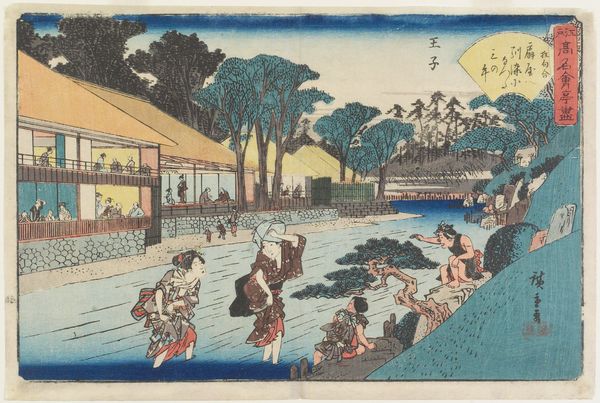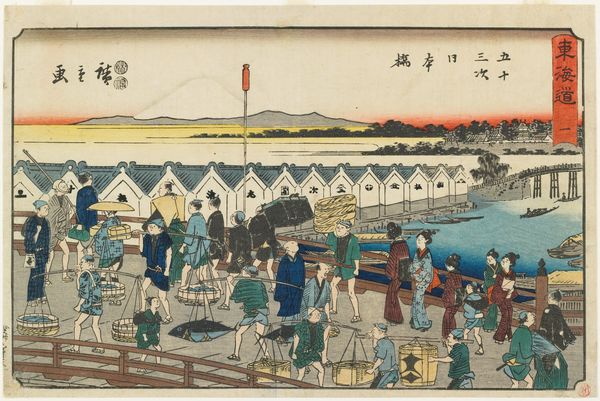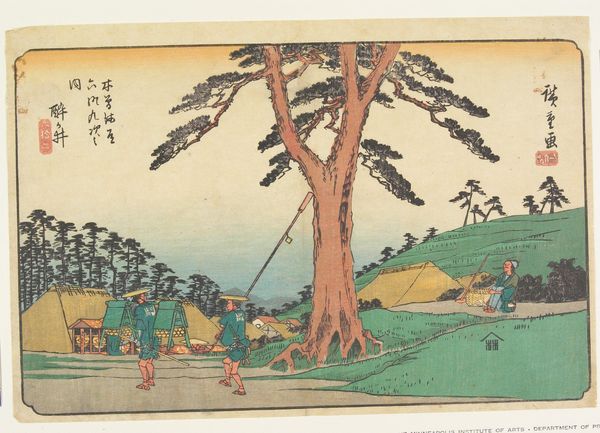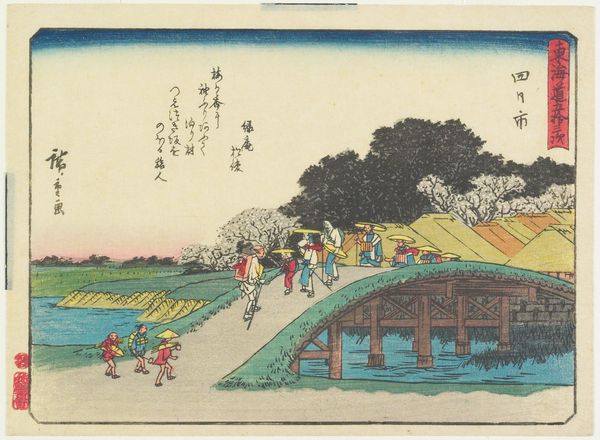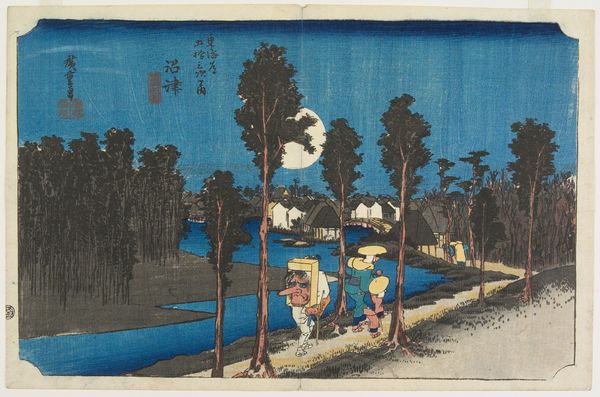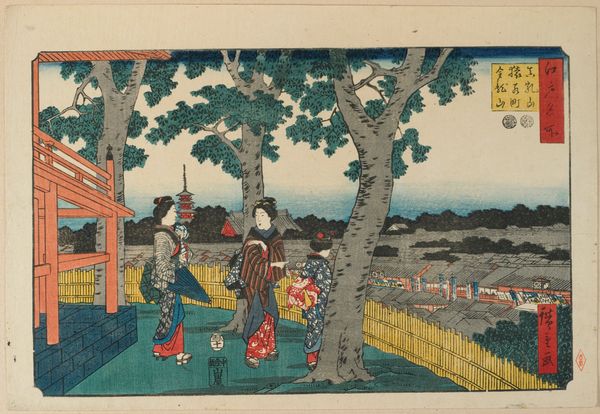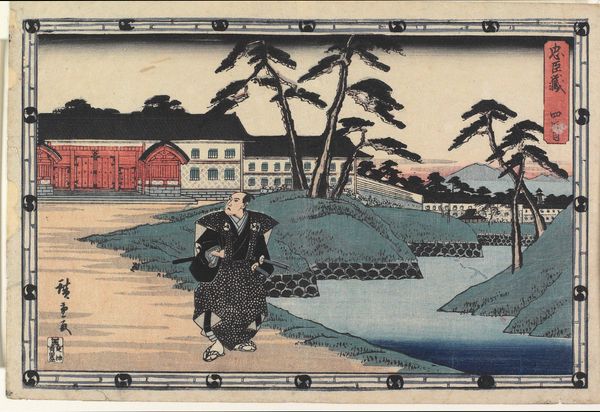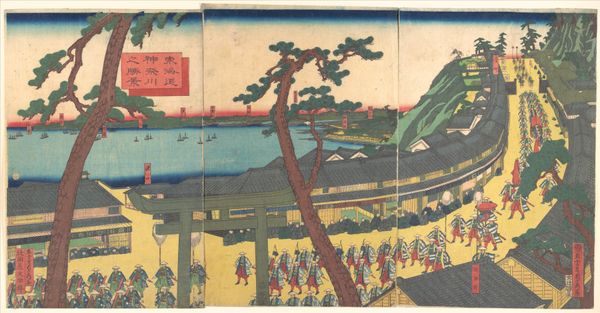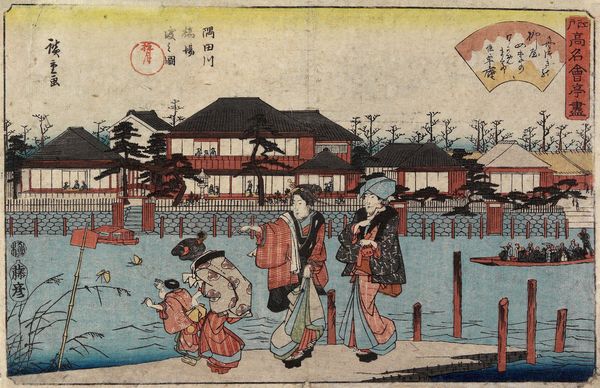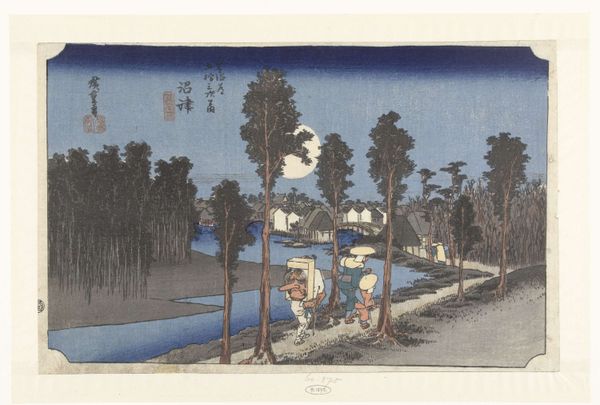
print, ink, woodblock-print, pencil
#
water colours
# print
#
landscape
#
ukiyo-e
#
japan
#
ink
#
coloured pencil
#
woodblock-print
#
pencil
#
cityscape
#
watercolor
Dimensions: 8 9/16 × 13 3/8 in. (21.7 × 34 cm) (image, horizontal ōban)
Copyright: Public Domain
Curator: Looking at this artwork, entitled "Outside Sakurada," possibly from 1854, by Utagawa Hiroshige, which we currently have on display here at the Minneapolis Institute of Art... The print seems quite lovely. Editor: It has such a serene atmosphere. The blues and greens create this tranquil, almost melancholic, mood. I am curious, though, about how this particular cityscape situates itself within the socio-political landscape of its time. Curator: Hiroshige made use of woodblock printing, an extremely popular process with multiple stages in Japanese art production during the Edo period, requiring a division of labor among the artist, block carver, and printer. It's truly collaborative and a complex, craft-based manufacturing system. Editor: Yes, the emphasis on collaboration is important here. Woodblock printing became an incredibly crucial way to reproduce images, disseminating cultural narratives on a mass scale. We also need to consider what’s being depicted: groups of women along the roadside... what are their roles and social standings at the time? The presence of the Sakurada Gate looms large in the background; how are these women relating to the structures of power at play in that moment? Curator: The materiality of ukiyo-e prints – ink and colors on paper made of specific plants – allowed for accessibility across social classes. Think about the ways color enhances the landscape: the way the indigo fades to suggest atmospheric perspective, and the labor to produce these effects on each print... Editor: This tension between accessibility and the meticulous labor that crafts these images resonates. What does the mass reproduction of such peaceful scenes accomplish socially? Does it speak to a collective desire, perhaps, for respite amidst potential social and political unease? Curator: It speaks of the culture surrounding craft and production, particularly prints like these. Each impression bears marks that relate to the human hand as well as complex technology and material availability at the time. The commodification and dispersal of beauty for consumption, we might say. Editor: The detail suggests how aesthetic production intertwines with power structures, revealing subtleties often dismissed in historical records. What happens if we view them from feminist and sociological viewpoints rather than simply landscape pieces. Curator: Considering the woodblock process reminds us art can act as both social document and consumer object. A fascinating convergence. Editor: Indeed. The very act of depiction becomes a means of revealing hidden power dynamics and suppressed voices.
Comments
No comments
Be the first to comment and join the conversation on the ultimate creative platform.
